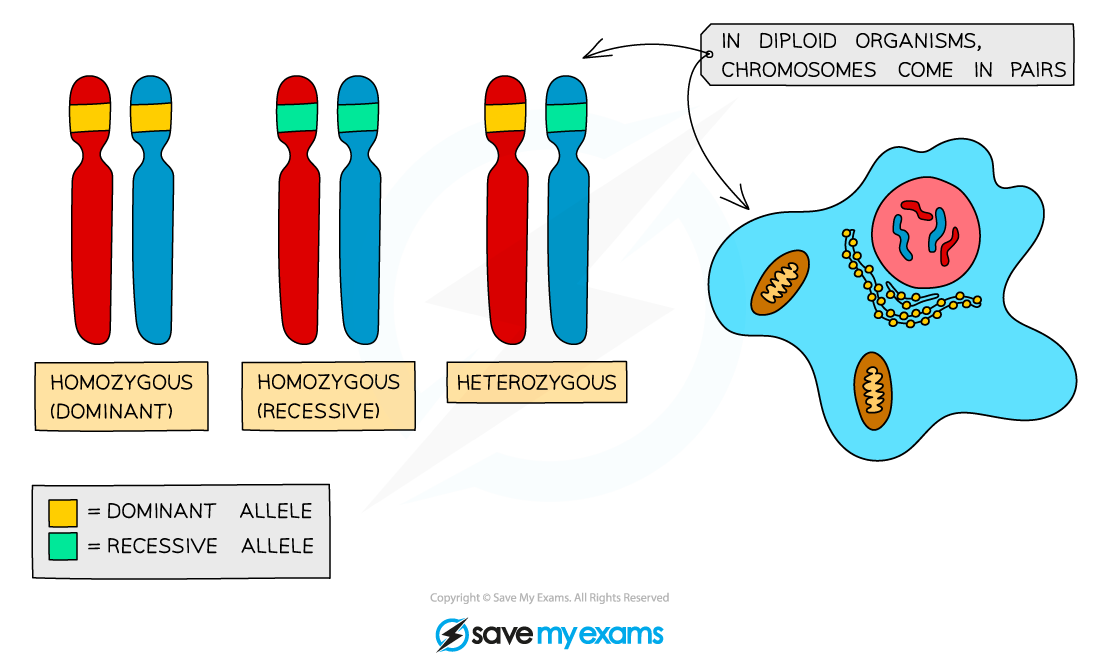Key Definitions (Edexcel GCSE Biology) : Revision Note
Did this video help you?
Key Definitions
A gene is a short length of DNA found on a chromosome that codes for a particular characteristic (expressed by the formation of different proteins)
Alleles are variations of the same gene
As we have two copies of each chromosome, we have two copies of each gene and therefore two alleles for each gene
One of the alleles is inherited from the mother and the other from the father
This means that the alleles do not have to ‘say’ the same thing
For example, an individual has two copies of the gene for eye colour but one allele could code for brown eyes and one allele could code for blue eyes
The observable characteristics of an organism (seen just by looking - like eye colour, or found – like blood type) is called the phenotype
The combination of alleles that control each characteristic is called the genotype
Alleles can be dominant or recessive
A dominant allele only needs to be inherited from one parent in order for the characteristic to show up in the phenotype
A recessive allele needs to be inherited from both parents in order for the characteristic to show up in the phenotype.
If there is only one recessive allele, it will remain hidden and the dominant characteristic will show
If the two alleles of a gene are the same, we describe the individual as being homozygous (homo = same)
An individual could be homozygous dominant (having two copies of the dominant allele), or homozygous recessive (having two copies of the recessive allele)
If the two alleles of a gene are different, we describe the individual as being heterozygous (hetero = different)
When completing genetic diagrams, alleles are abbreviated to single letters
The dominant allele is given a capital letter and the recessive allele is given the same letter, but lower case

Alleles are different forms of the same gene. You can only inherit two alleles for each gene, and they can be the same (homozygous) or different (heterozygous).
We cannot always tell the genotype of an individual for a particular characteristic just by looking at the phenotype – a phenotype associated with a dominant allele will be seen in both a dominant homozygous and a dominant heterozygous genotype
If two individuals who are both identically homozygous for a particular characteristic are bred together, they will produce offspring with exactly the same genotype and phenotype as the parents - we describe them as being ‘pure breeding’ as they will always produce offspring with the same characteristics
A heterozygous individual can pass on different alleles for the same characteristic each time it is bred with any other individual and can therefore produce offspring with a different genotype and phenotype than the parents - as such, heterozygous individuals are not pure breeding
Key Terms & Definitions for Genetic Inheritance Table


You've read 0 of your 5 free revision notes this week
Sign up now. It’s free!
Did this page help you?
